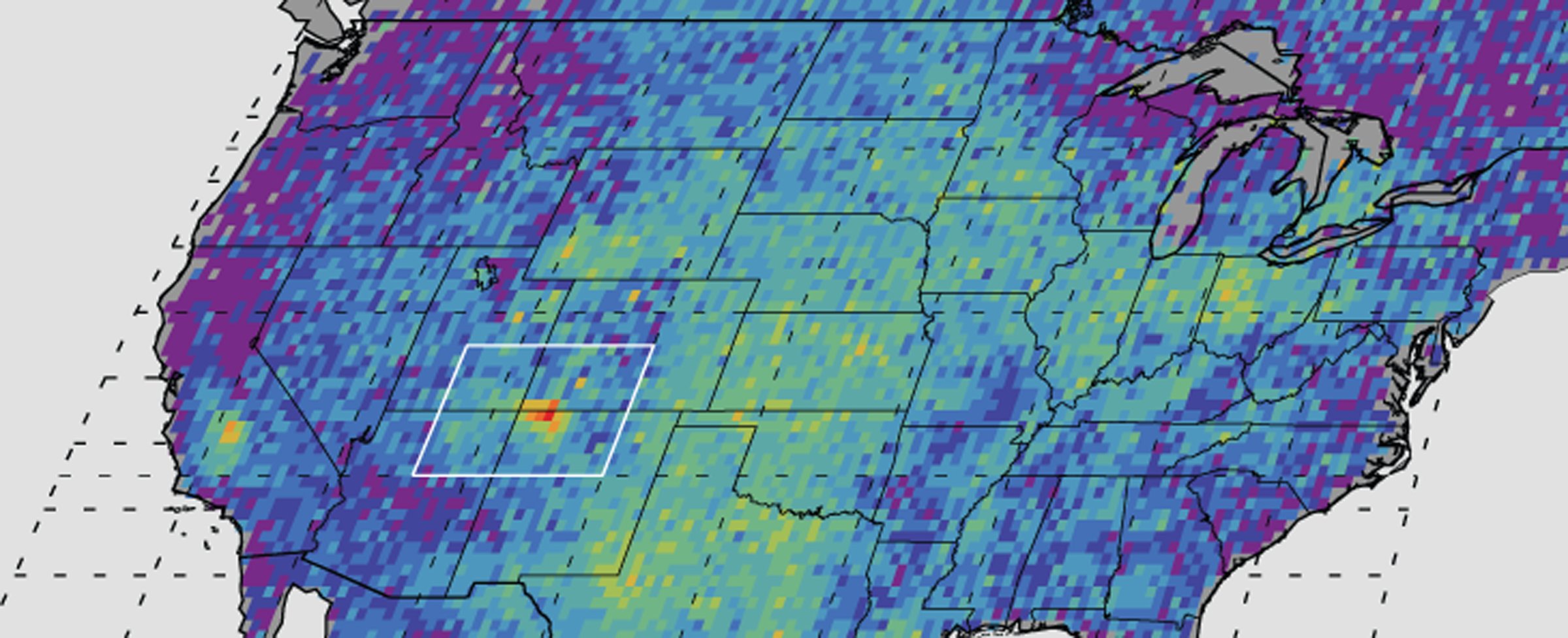
One small spot in the U.S. Southwest is the surprising producer of the largest concentration of methane gas seen across the nation.
Levels of methane over the Four Corners region are more than triple the standard ground-based estimate of the greenhouse gas, reports a joint study of satellite data by scientists at NASA and the University of Michigan.
Methane is a heat-trapping gas whose increasing quantities in the atmosphere have fueled concerns about global climate change.
The methane “hotspot,” seen on the map as a small red splotch, measures just 2,500 square miles at the junctures of Arizona, New Mexico, Colorado and Utah (for scale, the state of Arizona is about 113,000 square miles).
But the area generated an annual 0.59 million metric tons of methane between 2003 and 2009 — or, about as much methane as the entire coal, oil, and gas industries of the U.K. give off each year, says the report published in the scientific journal Geophysical Research Letters.
The hotspot predates the Southwest’s controversial use of hydraulic fracturing. But the zone is over New Mexico’s San Juan Basin, home to thousands of wells that pull natural gas from coal beds, the study’s authors say. Natural gas is about 95 to 98% methane, and the authors suggest that the hotspot is best attributed to leaks and errors in the region’s natural gas production equipment.
“While fracking has become a focal point in conversations about methane emissions, it certainly appears from this and other studies that in the U.S., fossil fuel extraction activities across the board likely emit higher than inventory estimates,” said Eric Kort, assistant professor of atmospheric, oceanic and space sciences at the University of Michigan and the first author on the paper.
“There’s so much coalbed methane in the Four Corners area, it doesn’t need to be that crazy of a leak rate to produce the emissions that we see,” added Kort. “A lot of the infrastructure is likely contributing.”
More Must-Reads From TIME
- The 100 Most Influential People of 2024
- The Revolution of Yulia Navalnaya
- 6 Compliments That Land Every Time
- What's the Deal With the Bitcoin Halving?
- If You're Dating Right Now , You're Brave: Column
- The AI That Could Heal a Divided Internet
- Fallout Is a Brilliant Model for the Future of Video Game Adaptations
- Want Weekly Recs on What to Watch, Read, and More? Sign Up for Worth Your Time
Write to Elizabeth Barber at elizabeth.barber@timeasia.com